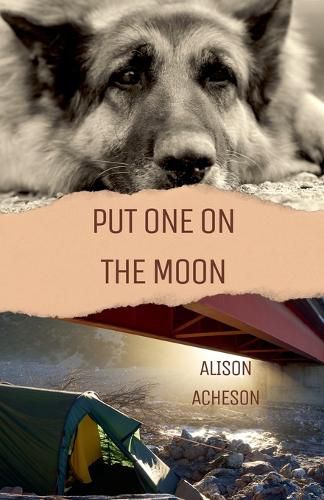Readings Newsletter
Become a Readings Member to make your shopping experience even easier.
Sign in or sign up for free!
You’re not far away from qualifying for FREE standard shipping within Australia
You’ve qualified for FREE standard shipping within Australia
The cart is loading…






This title is printed to order. This book may have been self-published. If so, we cannot guarantee the quality of the content. In the main most books will have gone through the editing process however some may not. We therefore suggest that you be aware of this before ordering this book. If in doubt check either the author or publisher’s details as we are unable to accept any returns unless they are faulty. Please contact us if you have any questions.
In Put One on the Moon, Joe and Henry explore the hidden corners of a small town named Bend, and try to find unexplored places to place a Kilroy Was Here.
Joe begins the process of putting together courage to question the meaning of family. His mother and little brother, Ben, seem both able to fit into small town life. His father, who they left in Boston, is about to have a second family, and Joe envisions this new family as replacing the old, one by one. He feels not at home, neither here nor there.
He meets Memphis, the veteran who lives in a trailer that can't go anywhere. And Morley Hudson, volunteer at the town museum, keeper of historical stories. And Tabitha, who has created a home in an abandoned church, surrounded by garden and sacred words. Tabitha, aging daughter of a minister, says, "I'm not at all sure that my kind of faith is something to ring bells about." Indeed, the bell tower of her home is boarded up and locked.
What started out as an innocent tagging quest in an innocuous place-a movie-set town-takes an ugly turn as Joe's friend Henry questions life itself. Joe has to act-with friendship, and with new and raw faith.
Put One on the Moon is a story of "going deep," of making time to pause, to challenge our fears, and to allow for change-maybe even exploration of our very soul. Someday a Kilroy was Here will be on the moon! But meanwhile, here on earth, our own backyard is more likely to be in need of what the old World War II symbol "Kilroy" represents: seeking out, acknowledging, and tagging the unknown.
$9.00 standard shipping within Australia
FREE standard shipping within Australia for orders over $100.00
Express & International shipping calculated at checkout
This title is printed to order. This book may have been self-published. If so, we cannot guarantee the quality of the content. In the main most books will have gone through the editing process however some may not. We therefore suggest that you be aware of this before ordering this book. If in doubt check either the author or publisher’s details as we are unable to accept any returns unless they are faulty. Please contact us if you have any questions.
In Put One on the Moon, Joe and Henry explore the hidden corners of a small town named Bend, and try to find unexplored places to place a Kilroy Was Here.
Joe begins the process of putting together courage to question the meaning of family. His mother and little brother, Ben, seem both able to fit into small town life. His father, who they left in Boston, is about to have a second family, and Joe envisions this new family as replacing the old, one by one. He feels not at home, neither here nor there.
He meets Memphis, the veteran who lives in a trailer that can't go anywhere. And Morley Hudson, volunteer at the town museum, keeper of historical stories. And Tabitha, who has created a home in an abandoned church, surrounded by garden and sacred words. Tabitha, aging daughter of a minister, says, "I'm not at all sure that my kind of faith is something to ring bells about." Indeed, the bell tower of her home is boarded up and locked.
What started out as an innocent tagging quest in an innocuous place-a movie-set town-takes an ugly turn as Joe's friend Henry questions life itself. Joe has to act-with friendship, and with new and raw faith.
Put One on the Moon is a story of "going deep," of making time to pause, to challenge our fears, and to allow for change-maybe even exploration of our very soul. Someday a Kilroy was Here will be on the moon! But meanwhile, here on earth, our own backyard is more likely to be in need of what the old World War II symbol "Kilroy" represents: seeking out, acknowledging, and tagging the unknown.